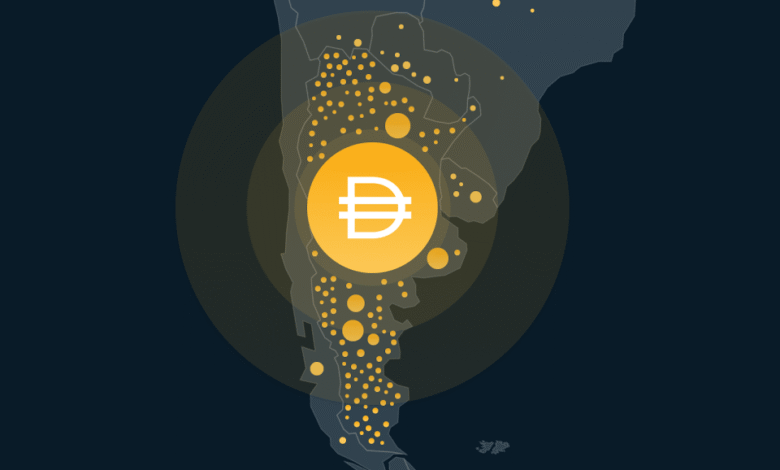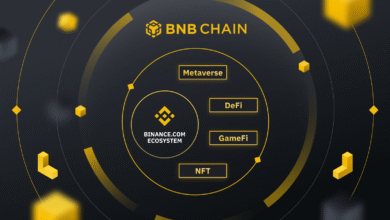Stablecoins in LatAm: Backbone of the Crypto Economy

Stablecoins in LatAm have emerged as a vital component of the region’s burgeoning crypto economy. According to a recent Dune report, stablecoin adoption has taken off, showing that users in Latin America are increasingly turning to these digital assets for everyday transactions. The appeal of stablecoins lies in their stability compared to volatile cryptocurrencies, making them ideal for payments, remittances, and savings. As usage skyrockets, LatAm is leading the way in cryptocurrency trends, with stablecoins accounting for a significant share of all crypto transactions, especially in countries like Argentina. The Dune report highlights how over $50 billion in stablecoins has circulated within the region, underlining their status as a cornerstone of the decentralized financial landscape.
In Latin America, the integration of digital currencies known for their price stability is transforming the financial landscape. These trusted currencies, often referred to as digital stable assets, are becoming increasingly prominent among those engaged in the crypto market. As recent insights outlined in the Dune report illustrate, the reliance on these assets has strengthened, particularly for practical applications such as remittances and daily transactions. This growing trend signifies a shift from speculative investments to more stable financial practices, demonstrating the unique position of stable currencies in the evolving landscape of cryptocurrency in LatAm. Overall, the embrace of stablecoins showcases a broader trend toward financial inclusivity and innovation in Latin American economies.
The Role of Stablecoins in Latin America’s Crypto Economy
Stablecoins have increasingly established themselves as a foundational element in Latin America’s crypto economy. As highlighted in Dune’s recent report, the adoption of stablecoins is not merely a trend but a robust momentum shift among users and businesses alike. With significant transaction volumes and a growing user base, stablecoins have transformed the way financial transactions are conducted in the region, emphasizing their importance not only in speculative trading but also in everyday financial activities.
This transformation is particularly noteworthy as it reflects the broader financial challenges faced within countries in LatAm. As inflation rates soar and access to traditional banking services remains limited for many, stablecoins offer a viable alternative for preserving value and facilitating transactions. They allow users to bypass volatile local currencies, thereby providing a platform for transactions that can help stabilize purchasing power.
Frequently Asked Questions
What are the key findings of the Dune report on stablecoins in LatAm?
The Dune report highlights that stablecoins have become integral to the LatAm crypto economy, facilitating over $50 billion in transactions between January 2021 and July 2025. USDT and USDC dominate this landscape, accounting for 90% of exchange volumes, with stablecoins representing 39% of regional crypto purchases in 2024, particularly strong in Argentina where they constituted 72%.
How is stablecoin adoption impacting the financial landscape in Latin America?
Stablecoin adoption in Latin America is transforming the financial landscape by enabling practical applications such as payments, remittances, and merchant settlements. This growing trend showcases a shift from speculative trading to utilizing stablecoins for everyday transactions, reflecting the region’s increasing trust in these digital assets.
Why are stablecoins considered crucial for the crypto economy in LatAm?
Stablecoins are deemed crucial for the crypto economy in LatAm as they provide stability in a region often plagued by economic volatility. Their high adoption rates and transaction volumes demonstrate how they serve as a reliable alternative for savings and transactions, making them a backbone of the emerging decentralized economy.
What trends are observed in stablecoin usage in Latin America according to the Dune report?
The Dune report notes a trend towards increased stablecoin usage in Latin America, with a significant shift from speculative trading to practical applications. Transaction volumes and adoption are rising, with platforms reporting that USDT and USDC are prevalent for transactions, especially in countries like Argentina.
How do Ethereum and Tron perform in stablecoin transactions in LatAm?
In LatAm, Ethereum continues to be the primary network for stablecoin transactions, serving as a settlement backbone. Meanwhile, Tron has emerged as a dominant player for low-cost transfers, while Polygon is gradually capturing a niche in payment-focused stablecoin flows, reflecting diverse usage across different platforms.
What role do regional exchanges like Bitso play in stablecoin adoption in LatAm?
Regional exchanges like Bitso play a significant role in driving stablecoin adoption in LatAm by facilitating user-friendly access to these digital assets. Their insights align with Dune’s findings, showing how stablecoins are linked to increasing practical applications, thus enhancing their integration into daily financial activities.
What percentage of purchases in Latin America involved stablecoins in 2024 according to the Dune report?
The Dune report indicates that stablecoins accounted for 39% of crypto purchases regionally in Latin America in 2024, with notably higher percentages in countries like Argentina, where USDT and USDC combined for 72% of all crypto purchases.
How do stablecoins support remittances and payments in LatAm?
Stablecoins support remittances and payments in Latin America by offering a stable value alternative to local currencies, allowing for faster and cheaper cross-border transactions. This practicality has contributed to their widespread adoption, reflecting a significant transformation in how money is transferred and settled in the region.
What is the significance of the stablecoin transaction volume reaching $50 billion in LatAm?
The stablecoin transaction volume of over $50 billion signifies the growing importance of stablecoins in Latin America’s financial ecosystem. It indicates strong user trust and reliance on these digital assets for transactions, highlighting their role in the broader adoption of cryptocurrencies within the region.
How does the rise of stablecoins in LatAm reflect in global cryptocurrency trends?
The rise of stablecoins in LatAm aligns with global cryptocurrency trends where practical applications are prioritized over speculative investments. The region’s focus on stablecoins for payments and real-world transactions is paving the way for broader acceptance of digital currencies worldwide.
| Key Points | Details |
|---|---|
| Growth of Stablecoins in LatAm | Stablecoins are becoming a central component of the crypto economy in Latin America, significantly increasing in use and acceptance. |
| Significant Transaction Volume | From January 2021 to July 2025, over $50 billion has been transacted using stablecoins, with USDT leading at $32.4 billion. |
| Practical Use Cases | The uses of stablecoins in LatAm are shifting towards payments and remittances, rather than just speculative trading. |
| High Adoption Rates | In 2024, stablecoins represented 39% of all purchases, with Argentina notably reaching 72%. |
| Popular Networks | Ethereum is the leading network for transactions, but Tron and Polygon are also gaining traction. |
| Support from Exchanges | Local exchanges support the trend, indicating that real-world applications for stablecoins are increasing. |
Summary
Stablecoins in LatAm are emerging as a vital part of the region’s decentralized economy, as highlighted by Dune’s recent report. The significant transaction volume, high adoption rates, and evolving use cases indicate that stablecoins are reshaping the financial landscape in Latin America. As cryptocurrency users increasingly favor stablecoins for practical purposes such as payments and remittances, the future of finance in LatAm appears to be firmly anchored in these digital assets.




